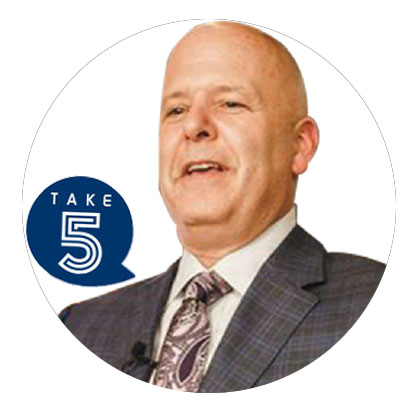Business Tips from Peloton COO Tom Cortese


T erms to know:
Peloton bike: A high-tech stationary bike — quiet smooth and interconnected — with an HD touch screen that streams live cycling classes taught by expert instructors as well as cycling classes from a library of thousands.
About the Expert
One of the cofounders of fitness company Peloton — which has revolutionized the world of fitness with the “best cardio machine on the planet ” according to Men’s Health — Tom Cortese currently serves as its COO. Prior to Peloton’s start about five years ago Cortese held numerous leadership positions in the tech industry. His passion he says lies in consumer technology.
Rule #1: Invigorate a “sleepy industry” with innovation.
Before Peloton says Tom Cortese the fitness world was “an old sleepy industry with old habits.
“Fitness equipment hasn’t evolved in the last 30 or so years; it’s all still the same big hunk of plastic that you see everywhere.” Since the advent of home workout videos in the 1980s fitness content hasn’t changed much either — “we’ve just gone from VHS to DVD to laser disc.” Even fitness apps use the same formula over and over again.
The fitness industry was likewise overlooked by technology. “There were no software companies marching into fitness ” recalls Cortese to advance the industry to keep current with the increasingly technological world.
As a fitness enthusiast with a strong tech background Cortese was uniquely poised to make waves.
“There was no sense of passion for innovation and looking to where this can go ” Cortese says. “We [the five cofounders] looked at that plus looked at our own busy lives — with kids school work — and said there’s a real opportunity to do something special and something different and light up an old category.”
Rule #2: Divide and conquer — i.e. allow business partners to hone in on their specific talents.
“We were blessed as a team ” Cortese says of the five individuals who came together to found Peloton. “We each have our own specialty and tremendous trust for one another. That in and of itself is what allowed us to move quickly in the early days.”
Each of the cofounders took charge of the key company-building tasks that most suited them.
For instance John Foley — now CEO — was the company’s face when it came to talking to investors. “He is remarkable when it comes to telling the Peloton story ” says Cortese. “He lived and breathed it every day.”
Cortese in turn took the lead on product construction and design. “I lived and breathed every day taking flights to Taiwan ” he says.
Other cofounders included a “marketing genius ” an attorney and a tech master. With each person focusing on different yet equally crucial tasks the group was able to perform at peak and produce a company that just five years later boasts 500 000 users and a 96 percent retention rate.
Rule #3: To stay relevant listen to your customer.
Exercise and fitness fads come and go. How does the Peloton team ensure that it won’t happen to them?
By listening to their users. “It is infused into our culture ” Cortese asserts. “We take a user-centered design approach to everything we do.” The company monitors user data from the bikes interacts with users on social media invites users to their offices to participate in beta tests. “We see the data — how they move through our system ” Cortese explains. “It is then everybody’s job at Peloton to find friction in that user experience and find a way to rip it out.”
Essentially Peloton continually strives to iron out wrinkles in the consumer experience. “If we take that approach every day we are always going to be creating something relevant to the consumer.”
In fact this type of vision will help any business shine above the competition in a flooded industry.
“If your entire company is aligned so that every customer feels that you are working for them if every day you wake up to make it a better experience for them — if that’s in your business you will naturally stand out.”
Rule #4: Pinpoint the weakest link in your customer process — and address it.
One major wrinkle that Peloton prides itself on solving: delivery.
“This world has gotten really good at delivering 50 pounds and under. We can move small parcels around the world overnight. No such platform exists for big stuff. Order a couch — it’s this long process of freight trucks and dirty-shoe guys walking into your house.”
The incongruity of introducing a high-tech high-design product via a “big schlub of a dude giving you a four-hour window and coming four hours late” wasn’t lost on Cortese. In fact it was a major blight on the Peloton experience.
“We think about the product as the end-to-end member experience ” he explains — including that time from order to delivery. “For us understanding that every part of that process is as important as every other part leads us to make certain decisions.”
Peloton developed a delivery protocol that guarantees satisfied customers. “We now deliver 50 percent of all Peloton bikes on our trucks with our guys from our warehouse… We walk in with a fully built fully tested clean ready-to-go bike.” They’ll even bring spare sizes of the special Peloton bike shoes. You order a size 10? They’ll come with size 9 10 and 11 to save you from having to ship back shoes that don’t fit.
Rule #5: Limit customization; keep it simple.
There are only so many choices a person wants Cortese insists.
“I am deeply fearful of the paradox of choice — it is a real thing ” he says referring to the notion that more options can be harmful as opposed to helpful (popularized by psychologist Barry Schwartz). Having to choose a plethora of small details to create your own fitness class may sound ideal but it can become a time-consuming nightmare.
“People think they want all that to make all these different choices but at the end of the day when you have 45 minutes to get out the door and you want to fit in a 30-minute workout it better be pretty easy to get that done.”
Peloton’s customers look to the company as an authority in fitness — giving the company leeway to make most of the decisions for them and then going along with them. That’s not to say they’ve done away with all customization completely. “We give clear paths for the member to opt into without the confusion of this massively customized system ” Cortese qualifies. One way is by reading information about the instructors to learn about each one’s unique style.
Cortese himself has his favorite instructors at Peloton which vary depending on his mood. If he’s interested in an intense workout for example he’d opt for one specific instructor; if he’s more in the mood of a playful entertaining — yet still challenging — workout he’ll opt for a different one. (Originally featured in Mishpacha Issue 681)
Oops! We could not locate your form.












